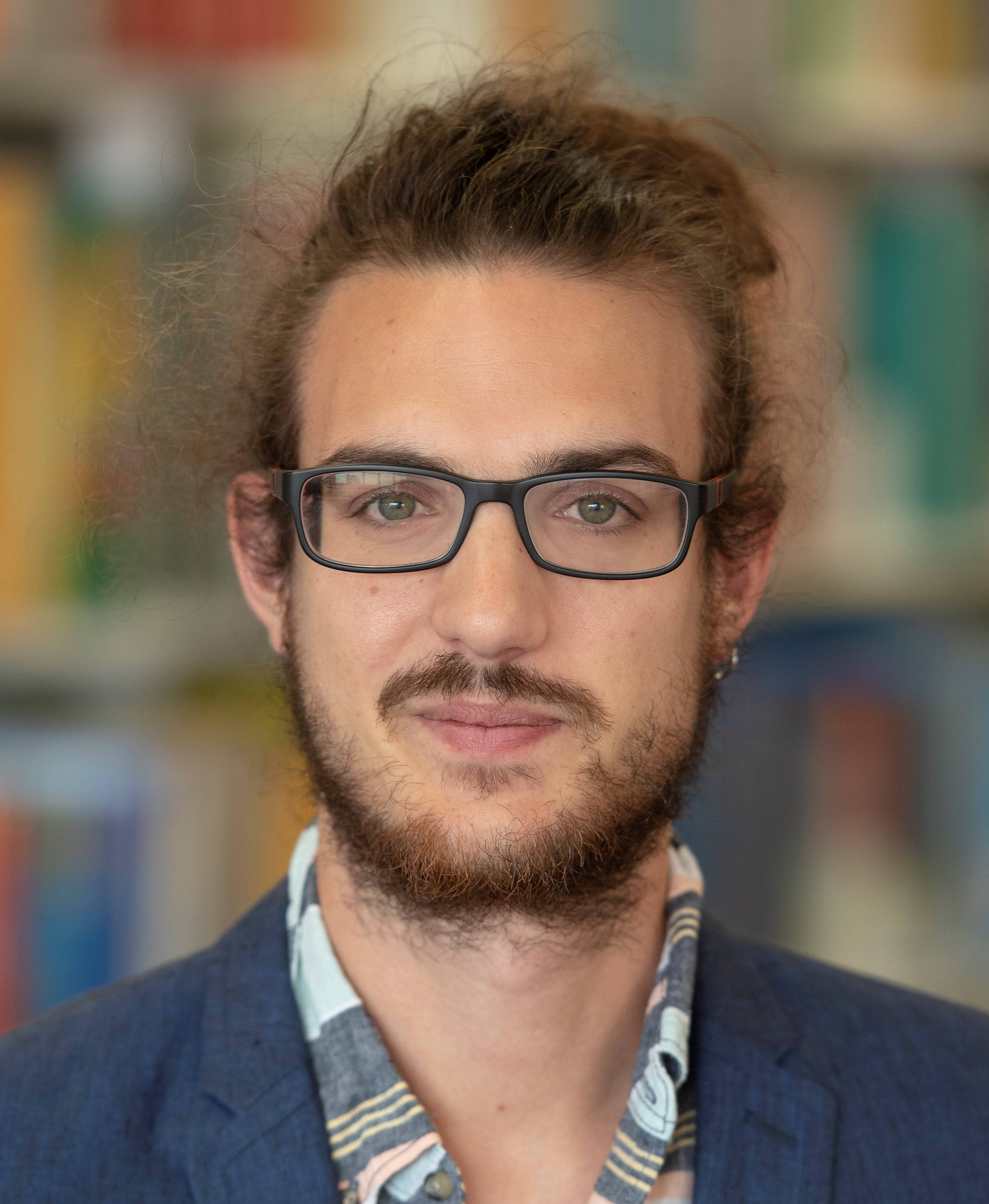Maël Le Noc Awarded Two Prestigious Residency Fellowships

Geography doctoral candidate Maël Le Noc has been awarded residency fellowships from the University of Southern California’s Shoah Foundation Center for Advanced Genocide Research and the United States Holocaust Memorial Museum (USHMM) to support his dissertation research on the geography of persecution during the Holocaust.
The Shoah Foundation’s Margee and Douglas Greenberg Research Fellowship is awarded annually to a PhD candidate by a panel of USC faculty & researchers who vet proposals for their originality and potential to make advancements in the field of genocide research through the use of testimonies in the Center’s Visual History Archive, where fellows spend up to a month in residence. The Fred and Maria Devinki Memorial Fellowship, from the Jack, Joseph and Morton Mandel Center for Advanced Holocaust Studies at the United States Holocaust Memorial Museum, supports advanced (ABD) doctoral candidates whose dissertations address the Holocaust in order to develop a new generation of Holocaust scholars.
Maël’s doctoral research, supervised by Dr. Alberto Giordano, investigates the effect of anti-Jewish persecution and the Holocaust on the spatial distribution, practices, and experiences of the Jewish population of two neighborhoods in Paris’s third arrondissement. Using both quantitative data (archival material produced by perpetrators and administrations) and qualitative data (written testimonies and audio recordings of the victims), Maël aims to generalize his findings in order “to theorize the way direct and structural violence combine at the local scale in the context of persecution and how persecution transforms the victims’ everyday lives and experiences, in particular in familiar places.” Although he studies historical occurrences of persecution, Maël’s research aims to broadly theorize the geographical complexion of oppression in a way that can be applied to contemporary instances as well. The goal is to better understand persecution and oppression – and the role of space in the evolution and escalation of violence.
Maël spent a month in-residency during the fall 2019 semester at USC’s Shoah Foundation Center for Advanced Genocide Research, where he researched testimonies from two Parisian neighborhoods central to his dissertation project – the Arts-et-Métiers and the Enfants-Rouges – by accessing data in the foundation’s Visual History Archive (VHA). The testimonies from this collection provided Maël with qualitative data crucial to analyzing the impact of persecution on the lived experience in the day-to-day lives of the people who inhabited and traversed the public and private spaces nested in these neighborhoods. His residency culminated in an online guest lecture, hosted by the foundation, that was attended by an international audience from North America, Europe, and Australasia, in which he discussed his research and the data he collected from the VHA.
Halfway through his residency at the Shoah Foundation, the USHMM notified Maël that he had been selected as an annual fellow at the museum’s Jack, Joseph and Morton Mandel Center for Advanced Holocaust Studies. Since both institutions possess the same testimony data in their collections, but not the same resources to access survivor information, Maël decided to spend the remainder of his USC residency compiling a database of testimonies whose qualitative elements he could research and analyze during his USHMM fellowship.
Maël’s Mandel Center fellowship award covers a five-month consecutive residency period, beginning in September 2020, and includes a monthly stipend to offset the cost of housing and other living expenses, as well as a travel stipend for roundtrip transportation to Washington, D.C. During his USHMM residency, Maël will analyze recorded victim testimonies in an effort to spatially situate practices of persecution during the Holocaust. He will also spend time comparing qualitative testimonial data and quantitative archival data to investigate if and when they corroborate and/or contradict each other. During the residency, he will have access to the Museum’s extensive resources, which, according to the USHMM, includes approximately 102 million pages of Holocaust-related archival documentation; library resources in over 60 languages; hundreds of thousands of oral history, film, photo, art, artifacts, and memoir collections; a Holocaust survivors and victims database; plus over 200 million images from the International Tracing Service archive Digital Archive – a collection containing more than 200 million digital images of documentation on the victims of Nazism.
Like many dissertation projects, Maël’s dissertation relies on historical and archival data housed in institutional repositories. One notable aspect of his doctoral research, however, is that he incorporated external funding opportunities into his dissertation research regimen to financially support both the research and writing aspects of his dissertation, resulting in funding awards from three separate funders – Shoah, USHMM, and the Honor Society of Phi Kappa Phi. Asked to comment on how other doctoral students might go about implementing this same strategy for their dissertation projects, Maël suggests, “apply to as many relevant opportunities as you can. The more you apply, the more you learn about applying, and the more you refine your project, and the better your applications become.” He strongly emphasized the importance of conveying relevance and significance of one’s research project and writing about it in a way that is suited for generalized audiences, so that reviewers from multiple disciplines can see a project’s broad potential, not just the applicant’s discipline. For help with this important aspect of applying for external funding, he suggests all applicants should seek advice from the external funding coordinators in The Graduate College.